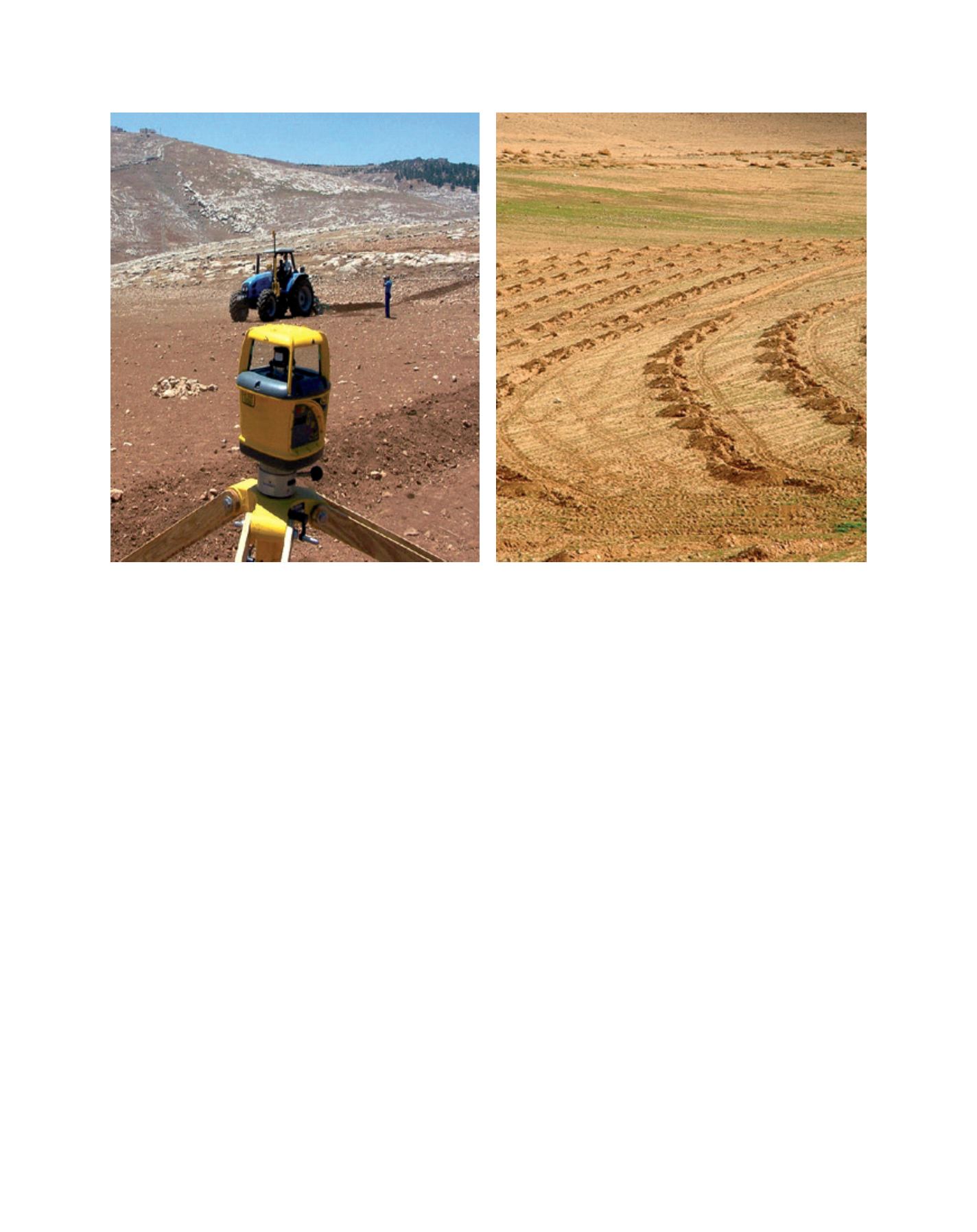

[
] 140
of semicircular long depressions in the ground to drop seeds
of selected palatable forage species. Livestock scientists
also conducted research into rams and ewes in an effort to
improve sheep flock productivity. The project provided 265
drought-tolerant and rust-resistant wheat genotypes devel-
oped in collaboration with ICARDA, which were tested by
the Iraqi Government under irrigated conditions. Finally,
significant policy research and support were provided to the
Government on the national seed law, wheat seed policy
and policy modelling. This holistic agroecological inte-
grated research approach was effective in understanding
and addressing the complex realities of Iraq’s drylands and
received positive evaluations from the donors, the govern-
ments of Iraq and the Iraqi Kurdistan Region Government.
Thus, through this project a new body of evidence related
to soil and water salinity management was developed that
included rehabilitation of irrigation and drainage networks,
introduction of new salt-tolerant crops, improving the
quality and management of groundwater, and introducing
best farming practices to enhance crop production. This
can provide new options and solutions for reducing the
negative effects of salinity on Iraqi agriculture.
Jordan’s rain-fed Badia
ICARDA, in collaboration with Jordan’s National Center for
Agricultural Research and Extension, is working with the
Jordanian Government to reverse and prevent land degrada-
tion and desertification across the Jordanian Badia. The Badia
stretches across most of Jordan and receives less than 200 mm
of rainfall per year. It is a highly fragile, marginal and threat-
ened agroecosystem that has become severely degraded over
the last few decades as a result of overgrazing of rangelands
and monocropping, the agricultural practice of culitvating the
same crop year after year on the same land.
An elaborate integrated research site selection process
was carried out involving the collection and analysis of
geographic information systems data, hydrological surveys
and rapid rural appraisals conducted by crop, livestock and
soil scientists as well as social scientists to interact with
the local communities and to conduct socioeconomic and
policy analysis. The final sites were selected to test various
innovations which included water harvesting, natural
resource management technology packages and drought
tolerant crops — mainly barley.
Among the interventions tested and adopted is the micro-
catchment water harvesting technique using the Vallerani
plough which ICARDA’s scientists have further upgraded
with an inexpensive auto laser-guiding technology. This new
system enhances water harvesting capacity for forage shrub
growth and reduces the cost and time required to identify
effective water harvesting contours. It has tripled the water
harvesting capacity, improved efficiency and precision and
substantially reduced the cost of creating micro-catchments.
The impact of the large-scale application of the Vallerani water
harvesting technology has effectively reduced soil erosion and
enhanced the collection of scarce water resources to conserve
the precious rainfall as well as boost crop production — a
win-win situation for the people of the Badia.
The improved Vallerani technology has been implemented
on over 1,800 hectares of rangeland so far and the adoption
Greening the Badia: laser-guiding micro-catchment water harvesting technology on contours for forage shrubs
Images: ICARDA
L
iving
L
and
















